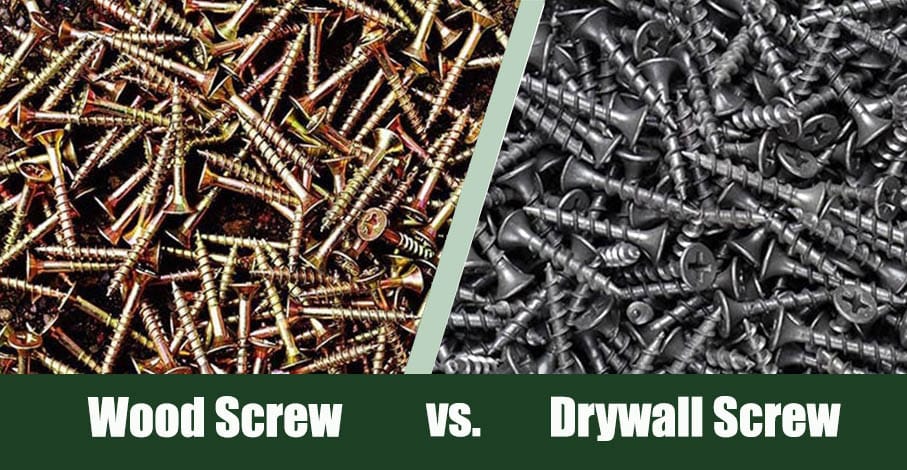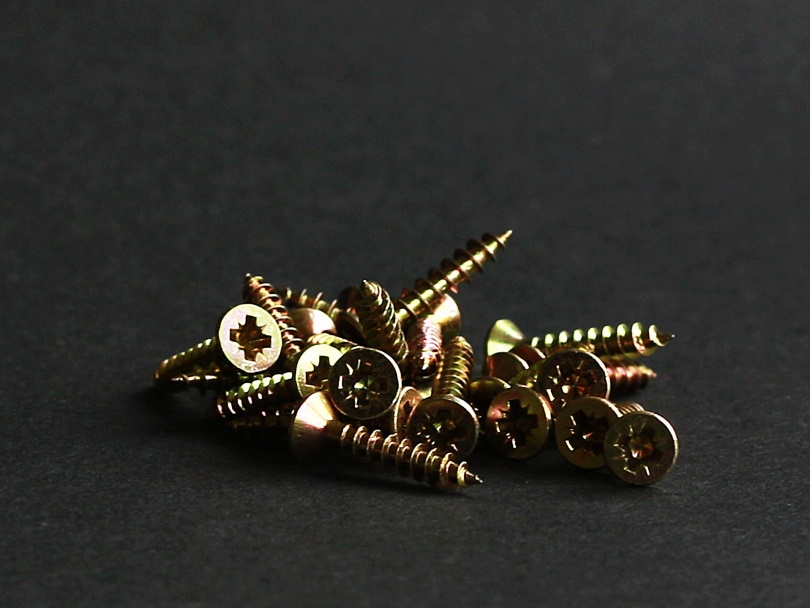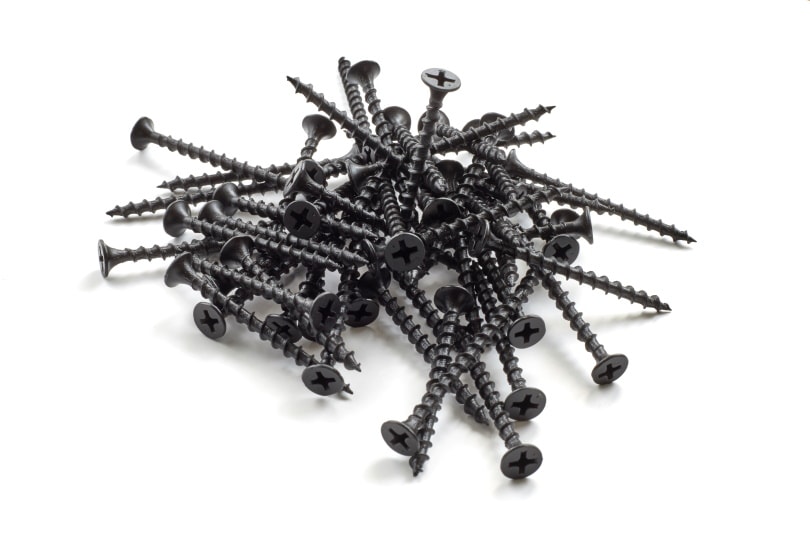Wood Screw vs. Drywall Screw: Differences, Benefits & Uses
-
Pete Ortiz
- Last updated:

Even though wood screws and drywall screws serve the same general purpose—to screw something in place—it’s important to know when to use each screw. If you use the wrong screw for the job, you could end up with a project that falls apart in mere minutes.
To ensure you always use the right screw for the job, this guide gives you a comprehensive overview of a wood screw versus a drywall screw. We explain the difference between these screws and when to use each one. Let’s get started.
Overview of Wood Screw
Wood screws are designed to bring pieces of wood together. These are the sort of screws you use when creating a door frame, cabinet, or some other wooden object. As a result, the screws are long, hard, and sharp. They will screw through just about anything and hold the two pieces together beautifully.

Threading
The threading on a wood screw is distinctive. It is sharp and often tapers for efficiency. Threading does not cover the entire screw either so that the wood is pulled together tightly. The part that lacks threading can make it difficult to screw through the entire piece of wood without a power tool.
Shank
The shank on wood screws is designed to last a long time. It is tapered and sharp so you can easily join the woods together. Because the entire shank is not threaded, it can be difficult to get a wood screw all the way through the material. Still, this unique shank allows for the screw to be both long and flexible so that it can bend with the wood.
Construction Material
Wood screws are normally made from steel, but they can also be made from nickel, bronze, brass, and copper.
Uses & Benefits
Wood screws are the most common screws. They are often used for fastening any type of wood together. If you have screwed wood in place, you have most likely used a wood screw because it can bury itself in the wood and replace clamps in certain cases. They’re also super easy to install thanks to the sharp tips.
- Great for all wood jobs
- Easy to use
- Holds without a clamp
- May be too tough on delicate surfaces like drywall
Overview of Drywall Screw
Drywall screws, sometimes called framing screws, are specifically designed to go through drywall without damaging the material in the process. It also has a unique head to ensure an attachment is secure. Often, carpenters use drywall screws to attach sheetrock to wooden or metal studs.

Threading
The threading on a drywall screw can be coarse or fine. Coarse threads are more difficult to pull out than fine screws. Even so, some people prefer coarse screws because they can screw in quickly.
Shank
Just as the threading on drywall screws varies from screw to screw, so too does the shank. Drywall screws can come in many lengths. The length is dependent on the thickness of the drywall you are screwing through.
Construction Material
Drywall screws are almost exclusively made from hardened steel that is brittle. The steel is so brittle that the screw can actually snap when screwed into hardwoods or other hard materials.
Uses and Benefits
As the name suggests, drywall screws are almost exclusively used whenever you are working with drywall. These screws are designed so that they can effectively screw through drywall without damaging the drywall in the process. For this reason, drywall screws are not strong enough to withstand hardwood, stone, or metal.
- Specialized screw
- Won’t damage drywall
- Not useful for many jobs
 Should I Use a Wood Screw or a Drywall Screw?
Should I Use a Wood Screw or a Drywall Screw?
Because wood screws and drywall screws are so different, it’s easy to know when to use which one.
If you are dealing with wood or some other relatively hard surface, you likely need a wood screw. The wood screw will be able to drive into the material quickly and efficiently, so you don’t have to spend a lot of time on the job. If you try to use a drywall screw for these sorts of jobs, the screw will likely just break.
Even though drywall screws are not ideal for wood or hard jobs, they are perfect for when you need to drill through drywall. In fact, drywall screws are almost exclusively used for drywall purposes. They will screw into the drywall without damaging the surface. If you use a wood screw for this job, you will likely break the drywall.
Conclusion
Wood screws and drywall screws have similar purposes, but they are used in different scenarios. Wood screws are tough so that they can dig into hard surfaces like hardwood. Drywall screws are designed so that they can easily screw into delicate materials, such as drywall.
As a rule of thumb, use drywall screws if you are working with drywall, but use wood screws when working with wood. Keep in mind that there are other screw types available. For example, deck screws are better suited for building a deck, even though decks are typically made from wood.
Featured Image Credit: (L) Alexas_Fotos, Pixabay | (R) pryzmat, Shutterstock
Contents


